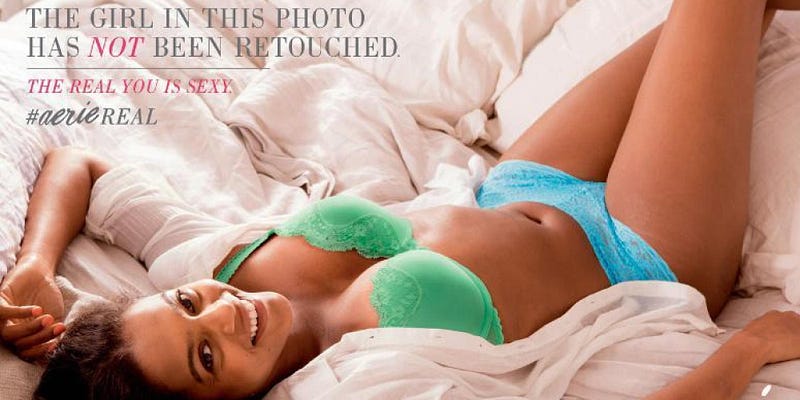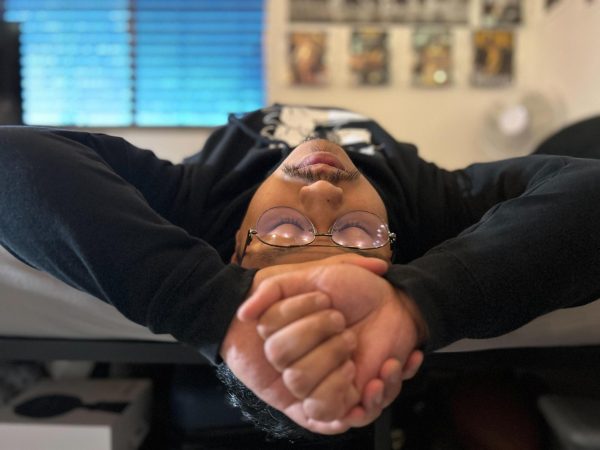Am I Pretty Enough Yet?
Recovered anorexic calls for change in the media’s portrayal of women
The media perpetuates dangerous and unattainable ideals of female beauty, damaging the self-esteem of women all over the globe. This needs to change immediately! I propose a media revolution in which we as spectators and consumers of the media demand that all races, genders and body types are equally represented in the media instead of the tall, pretty, ultra-skinny, with breasts enhanced to look fuller; a cookie cutter mold that most media outlets have crafted for the women they feature.
It is important to remember that the women in magazines that appear as described above do not actually look this way. It has probably taken a very skilled Photoshop artist hours to retouch the image so it looks as if the subject has reached unattainable perfection. However, there are women and young girls who will do anything to attempt to achieve this body type, including starve themselves. These women are real. These women have convinced themselves that a fantasy beauty ideal is more important than their mental and physical health.
An article written in the January 2012 issue of Plus Model Magazine describe how the pressure to fit this impossible image of physical perfection hasn’t even escaped models themselves. The magazine article reported that 20 years ago, a plus sized model was between the sizes 12 and 18. Now plus sized modeling begins at size six.
The Daily Mail reported on Oct. 2, 2013, that recovered anorexic British model Georgina Wilkin was booked for her rail-thin frame during her bout with the illness. Wilkin said those who booked her told her to “keep doing whatever she’s doing.”

In order to escape being labeled plus sized, many models, such as Wilkin, have resorted to behaviors typically associated with anorexia. If the women who are deemed the highest caliber of beauty cannot achieve the body type required to work in the industry without making themselves sick, why on earth would we want to emulate that behavior?
On Sept. 29, fashion designer Stella McCartney posted a picture on her Instagram of a very emaciated model promoting her summer 2015 clothing line. An Internet firestorm ensued. Commenters shamed McCartney for seemingly promoting anorexia. One commenter said, “This photo is everything that is wrong with the fashion industry.”
McCartney issued a statement: We should have been more mindful…It was a quick snap done backstage that was misleading. We listened to our followers and we took it down and replaced it. We can only apologize if we offended anyone.”The photo has since been taken down and replaced with one of a much healthier looking model, Malaikia Firth.

While I am not sure that a single photograph represents everything that is wrong with the modern fashion industry, it certainly does shed light on an issue that needs to be discussed. By publishing photographs of emaciated women and touting them as high fashion models, it sends the message to women that this is what they need to achieve in order to be beautiful. There are beautiful women everywhere, in everyday life. Very few of these women are a size zero and the media needs to take notice.
I battled anorexia in my teens. From the ages of 12 to 14, I starved myself and exercised nightly until I nearly blacked out. I don’t believe that eating disorders are usually caused by one specific thing, but I know that constantly being bombarded with images of perfectly Photoshopped women certainly did not help.
During those two years, I was unaware that I was sick, despite the fact that everyone around me could see it. My mother often cried and told me I was slowly killing myself. I thought she was being overly dramatic. I was 5’7” and weighed 90 pounds, but when I looked in the mirror, all I saw were cankles, cellulite and thunder thighs. I didn’t realize I was ill then and I never thought that the media had anything to do with my constant need to be the skinniest person in the room. But looking back, I realize that I was young and impressionable. I did not understand that the photos of women I looked at in magazines were lies, and as a result, I wanted to be just like them.
If the cover pages of magazines displayed in most grocery store checkout lines are any indication of the media’s unrealistic beauty expectations, achieving this mythical standard of physical perfection should be easy. If all women went on whichever fad diet the publication happened to be promoting, they would “lose 15 pounds in a week” and “drive men wild,” thus attaining true beauty. This kind of advertising does not only damage a woman’s self-esteem, but it also makes her think that having a man in her life is the only way she can achieve validation. Call me insane, but if a guy will not date me because of my weight, he is not the type of person I want to be involved with anyway.
I know I’m beautiful. I don’t need a man or anyone else to confirm this. But it took months of therapy, soul searching, and setbacks to rewire my brain to think this way. If the media is supposed to be a reflection of ourselves, then we should be represented by it. Once the media realizes that tall, thin and blonde is not the only type of beauty out there and that women are actually people, not just pretty things put on this earth for the pleasure of men, the better off everyone will be. And if this were to happen, it would be a much rarer circumstance to find a girl suffering from an eating disorder.
To be fair, a few corporations have made efforts to include un-photoshopped images of their models in ad campaigns, such as Aerie, a popular lingerie line for teens and young women, and Dove, who have hired women of an average weight to advertise their products.

This is a good start, but it is nowhere near enough. As long as we have magazines that constantly tell us we need to lose weight, TV ads pushing the newest diet fad, and overly thin runway models and celebrities who are treated as goddesses, there will continue to be young women with similar stories to my own.
Substance is a publication of the Mt. San Antonio College Journalism Program. The program recently moved its newsroom over to Medium as part of a one-year experiment. Read about it here.







